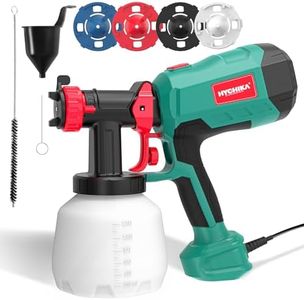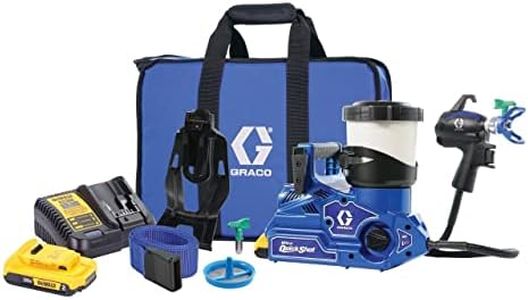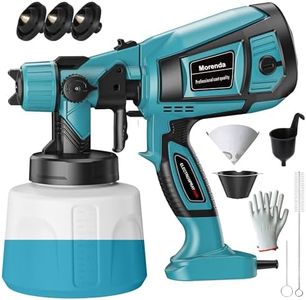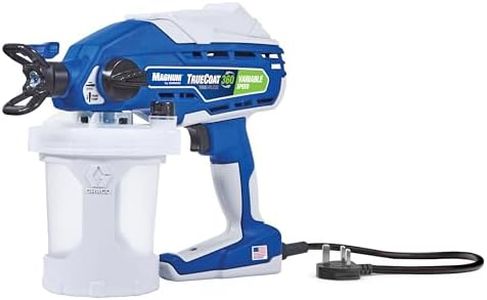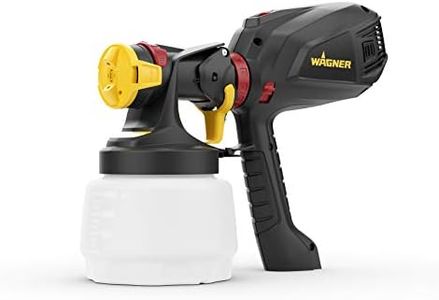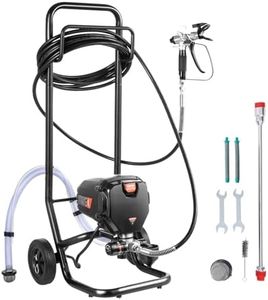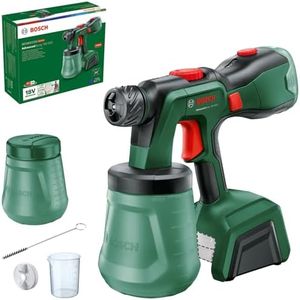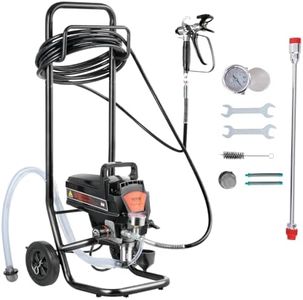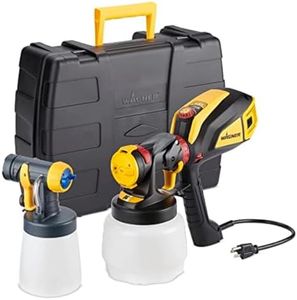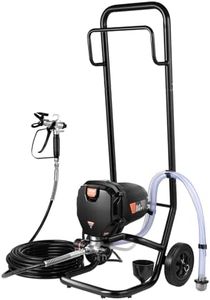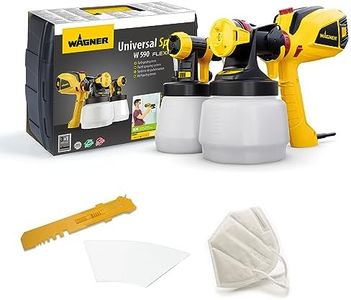We Use CookiesWe use cookies to enhance the security, performance,
functionality and for analytical and promotional activities. By continuing to browse this site you
are agreeing to our privacy policy
10 Best furniture paint sprayer
From leading brands and best sellers available on the web.By clicking on a link to a third party's website, log data is shared with that third party.
Buying Guide for the Best furniture paint sprayer
Choosing the right furniture paint sprayer can make your painting projects much easier and lead to smoother, more professional-looking finishes. Before making a choice, think about the types of furniture you’ll be working on, where you plan to do your painting (indoors or outdoors), and how comfortable you are with handling painting equipment. Understanding the main features and knowing how they impact your painting experience will ensure you pick a sprayer that matches your needs and painting style.Sprayer TypeThe sprayer type refers to the mechanism the sprayer uses to pump and atomize paint. The most common types for furniture are airless, HVLP (high volume, low pressure), and compressed air sprayers. Airless sprayers push paint at high pressure and are good for covering large areas fast, but can create overspray. HVLP sprayers use a steady air stream and are favored for detailed or even, fine finishes on furniture, but may apply paint slower. Compressed air sprayers are less common for furniture but can offer professional-level finishes if you have a compressor. Choose based on your experience and whether you want speed (airless), precision (HVLP), or have a compressor setup already (compressed air).
Nozzle Size and AdjustabilityNozzle size dictates the pattern and thickness of the paint spray. Adjustable nozzles or different nozzle tips allow you to swap between wide and narrow spray patterns. A smaller nozzle is ideal for thin paints and detailed work, while a larger one suits thicker paints or primers for broad surfaces. Opt for a sprayer that allows easy nozzle changes if you work with varied paints or need fine control for different types of furniture.
Paint Flow ControlPaint flow control lets you adjust how much paint the sprayer puts out. This is important because different furniture pieces require different amounts of paint—for example, a delicate chair needs less paint than a large wardrobe. Look for easy-to-adjust flow control to handle everything from light stains to heavy paints, and consider your typical projects—if they vary a lot, more control is helpful.
Ease of CleaningFurniture paint sprayers require regular cleaning so that paint doesn’t clog the system. Sprayers designed with fewer parts, easy disassembly, or included cleaning tools will save you a lot of time and hassle. If you’ll be painting often or changing paint types (like between water-based and oil-based), easy cleaning is essential to keep the sprayer working properly.
Paint CompatibilityPaint compatibility refers to whether the sprayer can handle different types of paint—latex, oil-based, stains, or varnishes. Some sprayers handle thicker paints directly, others require thinning. Think about the types of finishes you want on your furniture and pick a sprayer that can handle them without complicated prep or extra thinning.
Portability and WeightPortability and weight affect how comfortable the sprayer is to hold and move around as you work. Lighter and more compact sprayers are easier if you’ll be moving from piece to piece, working outdoors, or painting for long periods. If you usually work on larger pieces in a fixed space, a heavier model may be fine. Consider your own strength and workspace when choosing.
Power SourceThe power source could be electric (corded), battery-operated, or pneumatic (air compressor driven). Corded electric sprayers tend to be powerful and reliable for long jobs, but need a nearby outlet. Cordless models give maximum freedom to move but depend on battery life. Pneumatic sprayers need an air compressor, which adds weight and complexity. Your workspace setup and how much freedom of movement you need will guide this choice.


